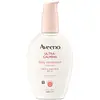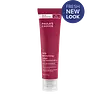What's inside
What's inside
 Key Ingredients
Key Ingredients

 Benefits
Benefits

 Concerns
Concerns

 Ingredients Side-by-side
Ingredients Side-by-side

Butyl Methoxydibenzoylmethane 3%
UV AbsorberEthylhexyl Methoxycinnamate 7.5%
UV AbsorberEthylhexyl Salicylate 2%
UV AbsorberWater
Skin ConditioningC12-15 Alkyl Benzoate
AntimicrobialCetearyl Alcohol
EmollientDimethicone
EmollientCyclopentasiloxane
EmollientGlycerin
HumectantCyclohexasiloxane
EmollientArachidyl Alcohol
EmollientPhenyl Trimethicone
Skin ConditioningPhenoxyethanol
PreservativeCetearyl Glucoside
EmulsifyingPanthenol
Skin ConditioningBenzyl Alcohol
PerfumingEthylene/Acrylic Acid Copolymer
Emulsion StabilisingChrysanthemum Parthenium Extract
Skin ConditioningBehenyl Alcohol
EmollientSteareth-2
EmulsifyingSodium Cocoyl Amino Acids
CleansingSteareth-21
CleansingParfum
MaskingPolyacrylamide
Arachidyl Glucoside
EmulsifyingDisodium EDTA
Methylparaben
PreservativeC13-14 Isoparaffin
EmollientPentaerythrityl Tetra-Di-T-Butyl Hydroxyhydrocinnamate
AntioxidantSarcosine
Skin ConditioningLaureth-7
EmulsifyingEthylparaben
PreservativeButylparaben
MaskingPropylparaben
PreservativeIsobutylparaben
AntimicrobialIodopropynyl Butylcarbamate
PreservativePotassium Aspartate
Skin ConditioningMagnesium Aspartate
Skin ConditioningButyl Methoxydibenzoylmethane 3%, Ethylhexyl Methoxycinnamate 7.5%, Ethylhexyl Salicylate 2%, Water, C12-15 Alkyl Benzoate, Cetearyl Alcohol, Dimethicone, Cyclopentasiloxane, Glycerin, Cyclohexasiloxane, Arachidyl Alcohol, Phenyl Trimethicone, Phenoxyethanol, Cetearyl Glucoside, Panthenol, Benzyl Alcohol, Ethylene/Acrylic Acid Copolymer, Chrysanthemum Parthenium Extract, Behenyl Alcohol, Steareth-2, Sodium Cocoyl Amino Acids, Steareth-21, Parfum, Polyacrylamide, Arachidyl Glucoside, Disodium EDTA, Methylparaben, C13-14 Isoparaffin, Pentaerythrityl Tetra-Di-T-Butyl Hydroxyhydrocinnamate, Sarcosine, Laureth-7, Ethylparaben, Butylparaben, Propylparaben, Isobutylparaben, Iodopropynyl Butylcarbamate, Potassium Aspartate, Magnesium Aspartate
Titanium Dioxide 3.85%
Cosmetic ColorantZinc Oxide 3.12%
Cosmetic ColorantWater
Skin ConditioningC12-15 Alkyl Benzoate
AntimicrobialIsononyl Isononanoate
EmollientPrunus Armeniaca Kernel Oil
MaskingCyclopentasiloxane
EmollientGlyceryl Stearate
EmollientPEG-100 Stearate
Butylene Glycol
HumectantPentylene Glycol
Skin ConditioningCetearyl Alcohol
EmollientDimethicone
EmollientGlycine Soja Sterols
EmollientVp/Eicosene Copolymer
Avena Sativa Kernel Extract
AbrasiveGlycerin
HumectantSodium Hyaluronate
HumectantAllantoin
Skin ConditioningTocopheryl Acetate
AntioxidantHydrogenated Lecithin
EmulsifyingTetrahexyldecyl Ascorbate
AntioxidantSuperoxide Dismutase
AntioxidantUbiquinone
AntioxidantCeramide Ng
Skin ConditioningMethicone
EmollientPalmitoyl Hexapeptide-12
Skin ConditioningPEG-10 Dimethicone
Skin ConditioningCucumis Sativus Fruit Extract
EmollientCaprylic/Capric Triglyceride
MaskingTribehenin
EmollientPEG-10 Phytosterol
EmulsifyingSorbitan Stearate
EmulsifyingPolyhydroxystearic Acid
EmulsifyingAlumina
AbrasivePolysorbate 20
EmulsifyingAluminum Stearate
Cosmetic ColorantXanthan Gum
EmulsifyingCaprylyl Glycol
EmollientDisodium EDTA
Ethylhexylglycerin
Skin ConditioningPhenoxyethanol
PreservativeChlorphenesin
AntimicrobialTitanium Dioxide 3.85%, Zinc Oxide 3.12%, Water, C12-15 Alkyl Benzoate, Isononyl Isononanoate, Prunus Armeniaca Kernel Oil, Cyclopentasiloxane, Glyceryl Stearate, PEG-100 Stearate, Butylene Glycol, Pentylene Glycol, Cetearyl Alcohol, Dimethicone, Glycine Soja Sterols, Vp/Eicosene Copolymer, Avena Sativa Kernel Extract, Glycerin, Sodium Hyaluronate, Allantoin, Tocopheryl Acetate, Hydrogenated Lecithin, Tetrahexyldecyl Ascorbate, Superoxide Dismutase, Ubiquinone, Ceramide Ng, Methicone, Palmitoyl Hexapeptide-12, PEG-10 Dimethicone, Cucumis Sativus Fruit Extract, Caprylic/Capric Triglyceride, Tribehenin, PEG-10 Phytosterol, Sorbitan Stearate, Polyhydroxystearic Acid, Alumina, Polysorbate 20, Aluminum Stearate, Xanthan Gum, Caprylyl Glycol, Disodium EDTA, Ethylhexylglycerin, Phenoxyethanol, Chlorphenesin
Ingredients Explained
These ingredients are found in both products.
Ingredients higher up in an ingredient list are typically present in a larger amount.
C12-15 Alkyl Benzoate is made up of Benzoic Acid and long chain alcohols. It has a low molecular weight.
C12-15 Alkyl Benzoate is an emollient and texture enhancer. Due to its solubility, it is often used in sunscreens to help evenly distribute active ingredients.
As an emollient, C12-15 Alkyl Benzoate helps soften and hydrate your skin. Emollients create a film on your skin that traps moisture within.
This ingredient has been reported to cause eye irritation.
Learn more about C12-15 Alkyl BenzoateCetearyl alcohol is a mixture of two fatty alcohols: cetyl alcohol and stearyl alcohol. It is mainly used as an emulsifier. Emulsifiers help prevent the separation of oils and products. Due to its composition, it can also be used to thicken a product or help create foam.
Cetearyl alcohol is an emollient. Emollients help soothe and hydrate the skin by trapping moisture.
Studies show Cetearyl alcohol is non-toxic and non-irritating. The FDA allows products labeled "alcohol-free" to have fatty alcohols.
This ingredient is usually derived from plant oils such as palm, vegetable, or coconut oils. There is debate on whether this ingredient will cause acne.
Due to the fatty acid base, this ingredient may not be Malassezia folliculitis safe.
Learn more about Cetearyl AlcoholCyclopentasiloxane, or D5, is a silicone used to improve texture of products and trap moisture.
D5 is considered lightweight and volatile. Volatile means it evaporates quickly after application. Once evaporated, D5 leaves a thin barrier that helps keep skin hydrated.
It is also an emollient. Emollients help soften the skin and prevent water loss. Silicones create a silky texture in products. D5 helps other ingredients become more spreadable.
Studies show D5 is safe to use in skincare products. We recommend speaking with a skincare professional if you have concerns.
Learn more about CyclopentasiloxaneDimethicone is a type of synthetic silicone created from natural materials such as quartz.
What it does:
Dimethicone comes in different viscosities:
Depending on the viscosity, dimethicone has different properties.
Ingredients lists don't always show which type is used, so we recommend reaching out to the brand if you have questions about the viscosity.
This ingredient is unlikely to cause irritation because it does not get absorbed into skin. However, people with silicone allergies should be careful about using this ingredient.
Note: Dimethicone may contribute to pilling. This is because it is not oil or water soluble, so pilling may occur when layered with products. When mixed with heavy oils in a formula, the outcome is also quite greasy.
Learn more about DimethiconeDisodium EDTA plays a role in making products more stable by aiding other preservatives.
It is a chelating agent, meaning it neutralizes metal ions that may be found in a product.
Disodium EDTA is a salt of edetic acid and is found to be safe in cosmetic ingredients.
Learn more about Disodium EDTAGlycerin is already naturally found in your skin. It helps moisturize and protect your skin.
A study from 2016 found glycerin to be more effective as a humectant than AHAs and hyaluronic acid.
As a humectant, it helps the skin stay hydrated by pulling moisture to your skin. The low molecular weight of glycerin allows it to pull moisture into the deeper layers of your skin.
Hydrated skin improves your skin barrier; Your skin barrier helps protect against irritants and bacteria.
Glycerin has also been found to have antimicrobial and antiviral properties. Due to these properties, glycerin is often used in wound and burn treatments.
In cosmetics, glycerin is usually derived from plants such as soybean or palm. However, it can also be sourced from animals, such as tallow or animal fat.
This ingredient is organic, colorless, odorless, and non-toxic.
Glycerin is the name for this ingredient in American English. British English uses Glycerol/Glycerine.
Learn more about GlycerinPhenoxyethanol is a preservative that has germicide, antimicrobial, and aromatic properties. Studies show that phenoxyethanol can prevent microbial growth. By itself, it has a scent that is similar to that of a rose.
It's often used in formulations along with Caprylyl Glycol to preserve the shelf life of products.
Water. It's the most common cosmetic ingredient of all. You'll usually see it at the top of ingredient lists, meaning that it makes up the largest part of the product.
So why is it so popular? Water most often acts as a solvent - this means that it helps dissolve other ingredients into the formulation.
You'll also recognize water as that liquid we all need to stay alive. If you see this, drink a glass of water. Stay hydrated!
Learn more about Water